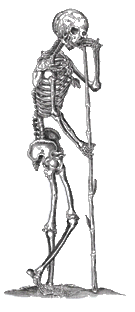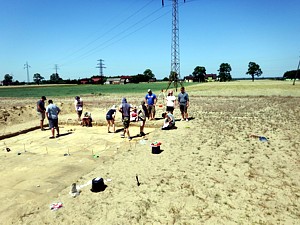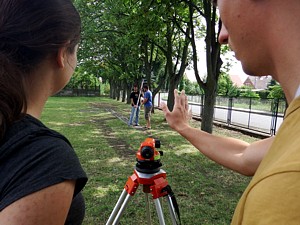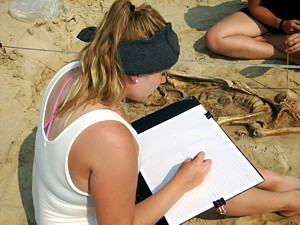




Drawsko
Drawsko is a multiperiod burial site. Situated outside of the village of Drawsko in the scenic northern part of Wielkopolska, the site is on a small hill which contains an extensive, skeletal cemetery dating to the 17th century. It features excellent preservation of skeletal remains and grave goods of post-medieval Poles. The cremation interments beneath the cemetery give insight into prehistoric human occupations as well. The Drawsko hill has been a distinct feature of the local landscape over thousands of years attracting prehistoric settlers for their funeral practices.
The region of Drawsko, located on the margin of the vast, marshy valley of the Noteć river, has since the earliest times been covered with impenetrable forest. The distribution of archaeological sites in the area indicates that for a long time the natural conditions hindered the development of human occupation. However, the oldest traces of human activity date back to the Neolithic and are represented by sherds of hand-made ceramics, and stone tools. Findings from the Bronze Age include the presence of cremation burial grounds dating to the 11th and 10th centuries BC (Lusatian culture). They were discovered in Drawsko as well as in a number of neighboring localities. Only the Middle Ages see a major turning point in local settlement patterns and economy. The greater number of archaeological sites dating to the early to?? late Middle Ages point to increased human activity related to the origin and expansion of the Polish state.
Several historic sources mention the 'Black Death' and cholera epidemics in the Noteć river region which decimated the inhabitants of that area during the years 1621, 1639, and 1661. One of those epidemics killed almost the entire population of Drawsko. Oral tradition suggests that the dead were buried on the slope of a small hill situated on the outskirts of the village. Today the hill, a silent witness of history, is believed to be haunted and is a source of local legends and stories. This does not seem to interfere with intensive agricultural work which has been damaging some of the graves, not only those from the 17th century but the prehistoric ones as well. The Slavia Project emphasizes rescue work including anthropological research on the site which aims at exhumation and examination of the bone remains and burying them again in another more appropriate location.
The Slavia Field School at Drawsko offers a unique opportunity for archaeology and physical anthropology students, as well as future practitioners of forensic sciences, to learn recovery and documentation techniques on both incinerated and skeletal human remains. All students take part in an archaeological excavation, getting hands-on experience in disinterment of human burials and cremations from their discovery to final removal. We offer an intensive course in human osteology and mortuary archaeology at the basic and advanced levels led by experienced English-speaking instructors. The course also offers a strong laboratory component which includes an opportunity to practice identification of complete and fragmentary human skeletal remains, as well as other osteological analyses.



